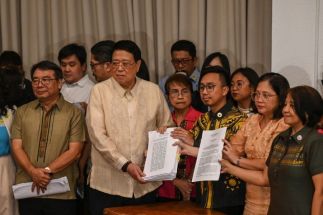Greening back the shorelines
CEBU, Philippines - Due to the geographical location of the Philippines, which makes it prone to natural disasters like typhoons and tropical cyclones, a non-government organization with environment protection as one of its advocacies urged the public to “green back the shorelines” by planting mangroves.
“Protecting and replanting of mangroves along our coastlines will be an effective way to combat incoming disasters, instead of building costly seawalls and dikes,” said Rowena Bandola-Alensonorin, executive director of the Integrated Development unit of the Ramon Aboitiz Foundation Inc. (RAFI).
She said that mangroves grow in tropical and subtropical intertidal, are exposed to air during low tides, and are covered by salt water during high tides zones. She cited bakauan lalaki, bakauan babae, pagatpat, and pototan as examples.
RAFI encourages the public to plant and grow mangroves because these trees have extensive and thatched root system that could protect shorelines and riverbanks from erosion. At the same time, they could serve as a “coastal pollutant sink” or trap for toxic heavy metals such as lead, cadmium, mercury, and arsenic coming from canals, rivers, and other waterways.
Alensonorin pointed out, though, that if the mangrove soil is disturbed, the metal-binding capacity of the area will cause it to release these poisonous elements and contaminate the groundwater and marine life, thereby, affecting humans.
Other benefits of mangroves, especially when swamped together, include: 1) provide near shore marine food web and valuable habitat for fisheries, shorebirds, marine animals, snakes and crocodiles; 2) combat global climate change by fixing a large amount of carbon dioxide to its tree parts and into the ground; 3) contribute to eco-tourism; 4) prevent the sudden salt water intrusion thus preventing damage of freshwater ecosystems and agricultural lands; 5) source of livelihood to the coastal population, since edible mollusks, sea cucumbers, fishes, shrimps, and crabs can be harvested in mangrove swamps, as well as provide as source of dyes, tannins, and medicines; and 6) possess a mechanism that can combat the intense sunlight rays and solar UV-B radiation.
“Mangroves have so many benefits. However, the efforts to preserve and conserve them need to be beefed up. Many mangrove swamps have been cleared to give way to fishpond, reclamation projects, or simply due to the extraction of fuel wood and timber. Globally, mangroves are considered one of the most endangered habitats, second only to terrestrial rainforests,” Alensonorin said.
She emphasized the need for the Filipinos to work together to develop more mangrove forests. She suggested some conservation initiatives, such as fostering better mangrove area management after acquisition or retention; improving knowledge and application; and directing education to the general public, decision makers and landowners, among others.
In last year’s Run 2 Plant 4 GREENIN Philippines, several local government units in Cebu Province, such as Asturias and Aloguinsan, included mangroves in their range of planting materials.
The GREENIN Philippines Program, which stands for Generation REdemption and Expansion of Natural resources INitiatives in the Philippines Program, seeks to develop, protect, enhance and co-manage denuded forestlands, brush lands and degraded residual natural forests by planting native tree species. (FREEMAN)
- Latest
- Trending



















